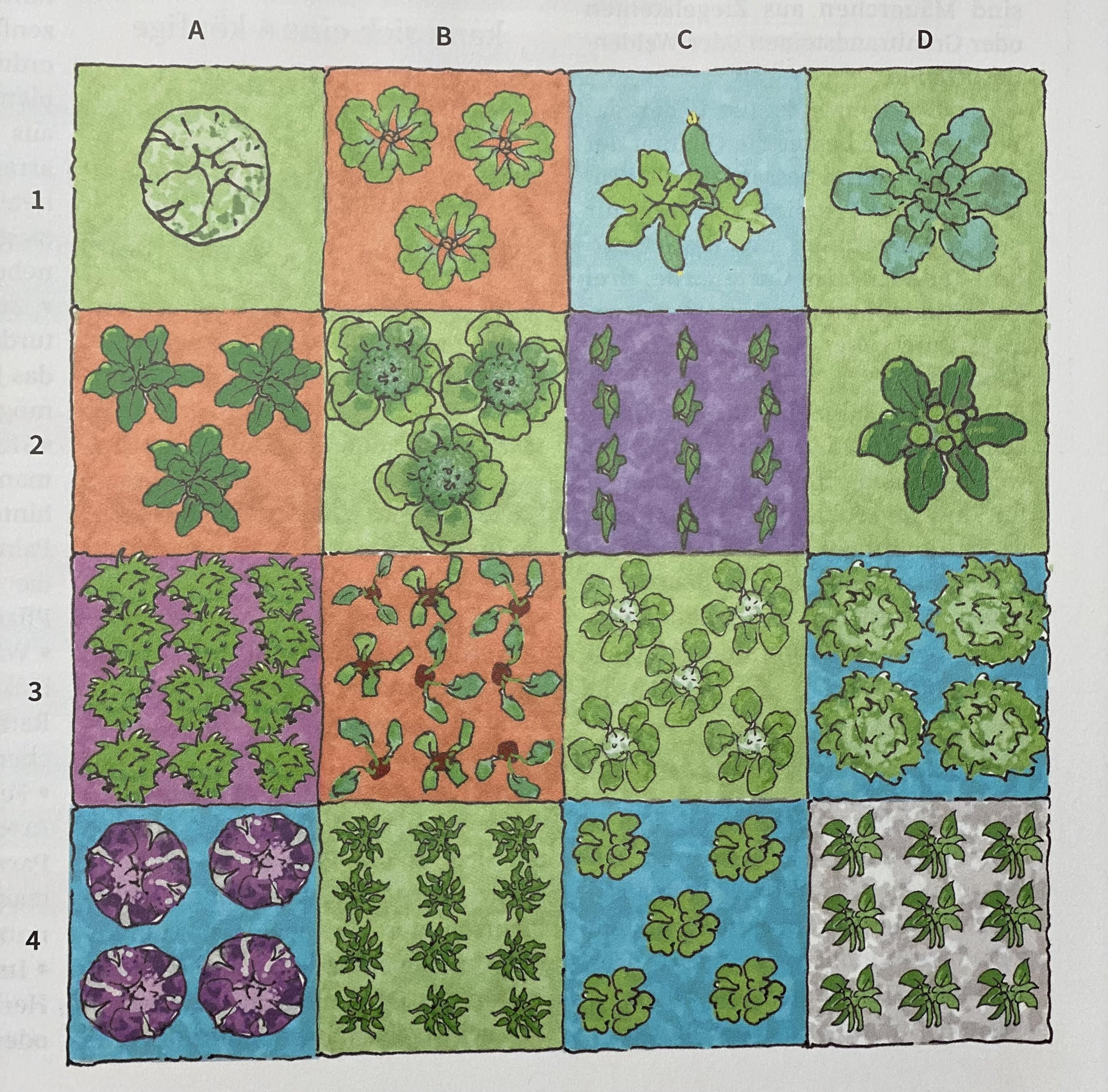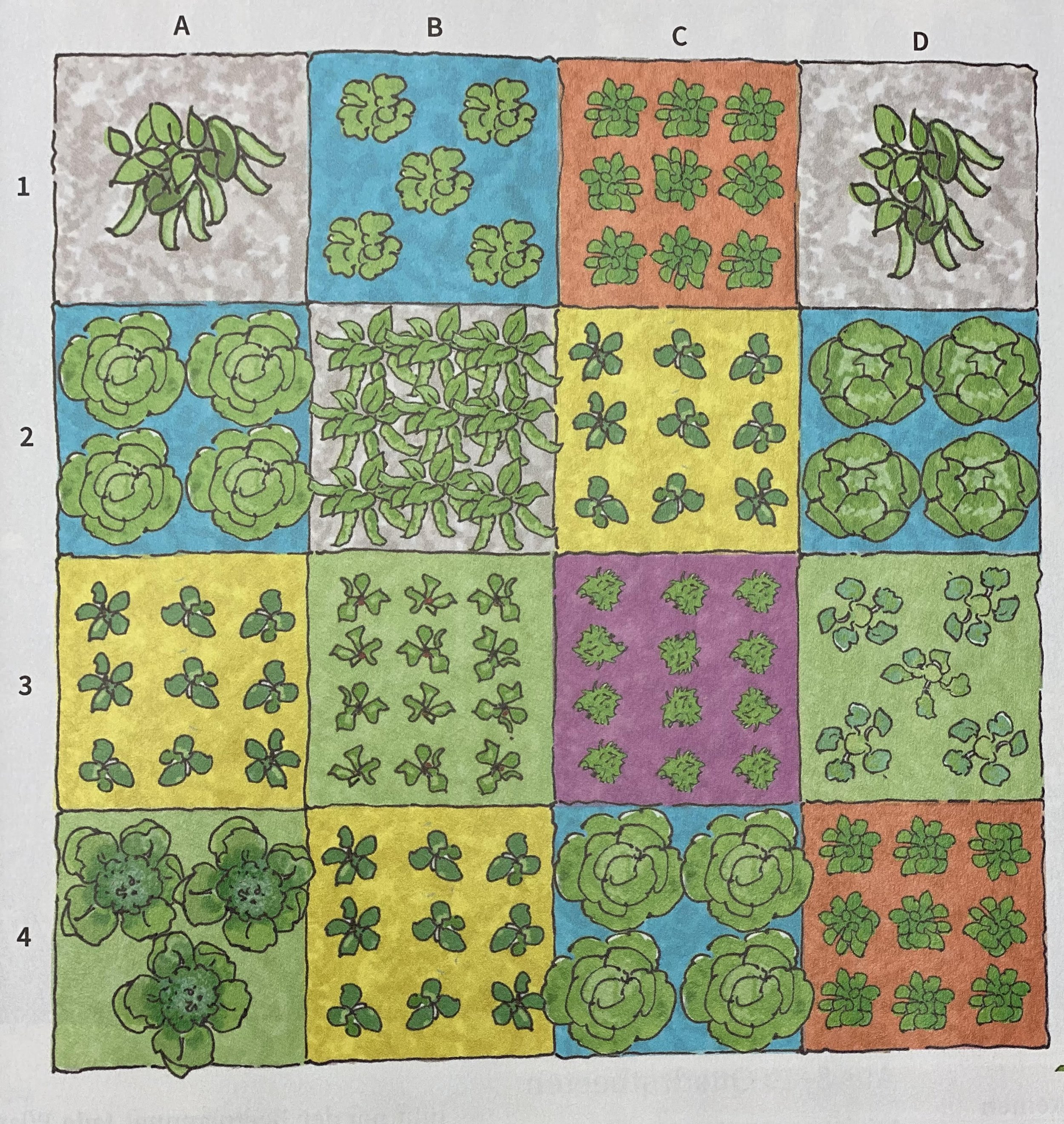An introduction to Square Foot Gardening
Square Foot Gardening is ideal for people with small or limited space, but it can also inspire gardeners to experiment! And because the idea originated in North America we have to adapt the planting schemes and varieties to our climate here.
A great variety of vegetables grown in a small space.
The idea behind Square Foot Gardening is very simple: A great variety of vegetables grown in a small space. It has become more prominent and popular in recent times, especially during the pandemic when people with no gardens or no previous experience started to embrace growing food for themselves and joined the worldwide garden community. Everywhere where there is sun there is space for a raised bed: the yard, the patio or terrace, the lawn, the balcony or the (flat) roof of the garage. The method can also be applied in existing gardens, polytunnels and also glasshouses, which are often small.
Square foot gardening focuses on planting, space, weed control and soil
Most likely peopled new to gardening probably start small and in small and will use bought compost, so soil fertility will be good. By optimising every space for growing, plants will cover the soil quickly and reduce the chance for weeds to get established. The variety of plants growing in a small space also helps against pest and diseases and the area can easily be covered with netting if required.
Square foot gardening is ideal in an urban scenario, where space is often limited, but by no means is it for urban gardens only. Some gardeners use the method for a much bigger garden and according to a feature in the German garden magazine Kraut&Rüben, “eight to ten square beds (each 1.2m x 1.2m and divided into 16 squares of 30cm x 30cm) can supply a family of four all year round with fresh vegetables”. That is a growing space of about 15 square meters. It is also possible to have squares of 40cm x 40cm or even 50cm x 50cm, to accommodate plants that need more space, like broccoli, runner beans or peas and also tomatoes, cucumbers, peppers and aubergines if you grow in a polytunnel. Until these plants grow big the space around can be used for lettuces or edible flowers.
Square foot gardening is a kind of companion planting and the rotation does not need to be too strict. Sowing and planting out is the same as for your garden or in your polytunnel and you can start off your plants in modules. Square foot gardening lends itself to multi-sowing, i.e. 4-5 radish per module, 5-10 scallions, 3-4 beetroot and salad leave mixes. The trick is to anticipate the length of time plants need to grow before harvesting, so that follow up crops can be planted. Important is to enjoy gardening and not being afraid of “making mistakes” as every year presents different challenges and we learn constantly.
The raised beds should in our experience have at least a depth of 40cm and should not be wider than 1.20m, so every area can be easily reached.
“I garden with a salad bowl in mind, not a wheelbarrow.”
said the American Mel Bartholomew, the originator and inventor of the square foot gardening method. After retiring from He turned to gardening after retiring at 42 from his engineering and construction firm and moving his family to Long Island. There, frustrated with weeding and watering rows of vegetables in his backyard, he applied his engineering expertise to conceive a garden made up of nine 4-foot-by-4-foot squares, each subdivided into 16 separate square-foot plots and planted with a different crop. In two months, it would produce at least 32 carrots, 12 bunches of leaf lettuce, 18 bunches of spinach, 16 radishes, 16 scallions, nine Japanese turnips, five pounds of peas, four heads of romaine lettuce, one head of cauliflower and one of broccoli.
It soon captured the imagination of aspiring horticulturists, introduced a bountiful harvest of vegetables into diets around the world, and inspired a public television programme “Square Foot Gardening,” which began in 1982 and ran for six years, and in a book by the same title, originally published in 1981 by Rodale Press selling an estimated 2.5 million copies
“I was always taught if you can’t go over a mountain, you go around it; if you can’t go around it, you tunnel through it; if you can’t tunnel through it, you stay and make a gold mine out of that side.” ( Mel Bartholomew 1966)


